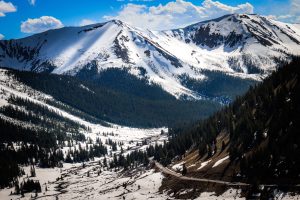Wiley: Beer or bread

Wiley Maple/Courtesy photo
On the other side of the ocean, the most famous beer fest in the world is coming to a close. Over 200 years ago, a tradition was sparked when Prince Ludwig of Bavaria married Princess Therese of Saxony-Hildburghausen, with an open invitation to the entire population — the celebration lasted five days, culminating in a horse race. The marriage not only united two powerful regions of Napoleonic Germany — perhaps the beginnings of a united Germany — but sparked the annual festival we know today.
As of yet, I have never been to Oktoberfest, but a couple of years ago, I had the pleasure of attending a similar, long-standing Bavarian beer festival in the forest mountains of Tegernsee, just south of Munich. The Waldfest (which essentially translates to forest fest) begins mid-June and runs every weekend until summer’s end. At the time, I was visiting a German friend (Raffa) from college for a short week, picking up skis from the factory, running mountains, and indulging in that age-old pastime Bavarians are famous for: beer. Indeed, the longest running brewery, Weihenstephan, was just a few miles away, which had been brewing the golden elixir for over a thousand years — quite literally watching empires fall as they proceeded on.
That June, I was informed it was the opening week of the Waldfest — and I would need a set of lederhosen if I was to attend. Luckily, we pregamed at his friend’s house, not far away, where I was loaned a set of 100-year-old traditional lederhosen that had been passed from father to son and on to a stranger from across the sea — after five minutes of conversation, a prost and chug. For the rest of the night, I would be greeted in exclusively German, then shock (per my authentic garb) as I informed my new companions, “Mein Deutsch ist nicht so gu” (I speak bad German/none). Whereupon nearly everyone I met proceeded to speak to me in fluent English, and delight, at least until midnight, when things expectedly devolved …
We arrived at the forest fest around 4 p.m., where roughly a thousand people from the surrounding countryside would be gathering every weekend for the next several months. Stalls were erected selling beer, pretzels, and turkey legs — but mostly beer. Traditional dances were performed, whips were cracked in harmony as young kids ran to and fro amongst their elders and grand elders. And I couldn’t help thinking how healthy such a gathering was as I was introduced to parents, children, the town doctor, X girlfriends, second girlfriends, and even the local “mayor” or thereabouts — and, of course, the town drunk …
But in this case, there was no such distinction. Throughout the rest of the night, all of the above would proceed to a state of extreme intoxication — laughter, singing, dancing, hugging, and, of course, puking — pissing and glass smashing. The night ended in the morning with several hundred people walking the long road home in the pre-dawn light, hoping for a taxi. Our group stripped down to our original birth suits and jumped in the iconic lake — before proceeding to breakfast and then bed. Although I started the night as a complete stranger, a few smashed glasses, a jig, and some heartfelt conversation had endeared me to a batch of locals I seemingly had no right to accompany. And it had me thinking that the golden elixir was the precursor of civilization.
Amongst archaeologists, geneticists and anthropologists, there remains an ongoing debate about what came first: the chicken or the egg — however, in this case, it’s beer or bread. The earliest evidence of intentional fermentation dates back 13,000 years to the Natufian peoples of the Levant (located in modern-day Israel/Jordan), 3,000 years before the agricultural revolution. However, long before we started to make it — the Drunken Monkey hypothesis proposes that our ancient fruit-eating ancestors sought out fermented fruit for its higher caloric density and the ease of acquisition — fermented fruit carries a stronger smell and is often conveniently lying on the ground, making it “ripe for the picking” — while simultaneously avoiding the caloric burn and risk of breaking ones neck scrambling up a tree. With seven calories per gram, ethanol falls just short of the most calorie-rich food (fat) and surpasses most food sources in caloric density, including proteins and carbohydrates. Beyond the tasty treat — its psychoactive components produced a curious sensation which we now call intoxication — which alone could be responsible for a myriad of additional motivations.
It is believed that ethanol exposure has had evolutionary consequences for humans and some primates, forming the enzyme ADH4 (Alcohol Dehydrogenase) 10 million years ago, allowing us to process alcohol faster and more efficiently than almost every other species — say, the fruit bat and tree shrew, who process alcohol through the same enzyme, though so efficiently that they show no signs of intoxication. Which, to the addled human, defeats at least half the point.
Likely some thousands of years later, some “poor sod” no doubt stumbled upon a recipe for beer, having left the grain out in the rain — just long enough for a wild yeast to ferment it naturally … while simultaneously being desperate enough or curious enough to drink down the proto beer mash and find liquid (ish) courage start to pump through their veins. A eureka moment that likely became the foundation for the agricultural revolution — a golden elixir that hydrated and elevated.
Beyond its caloric density, it provided a condition of intoxication — affecting the brain in profound ways. Slowing the prefrontal cortex, which is responsible for risk assessment and self-control … while simultaneously boosting dopamine and endorphin responses. Allowing some of the first conditions for friendships to form. There are few substances or circumstances that can so quickly and efficiently bond humans for life. I’m sure I’m not the only one to have sat down at a bar in some foreign land alone and uninspired — only to end it smashing glasses with some jolly chums having formed lifelong friendships over a couple of glasses of the liquid elixir. Indeed, I know of nothing else so effective at solidifying a bond between peoples — teams don’t come together over pre-season boot camp. Nor their first win. They come together during and after the first time they get blasted, blitzed, dinked, bombed, sharing their tears and fears with their newfound peers over hearty cheers precipitated by beers.
Indeed, amongst the short list of human universals like fire, laughter, dance, and romance — nearly every single culture, from total isolation to a dab of consultation, has stumbled upon and cherished intoxication. Huangjiu, Sake, Soju made of rice in the Far East. Beer, Chhaang, Kvass, originating from barley and rye in Europe, Tibet, and Russia. Wine from the grape in the Mediterranean. Mead from the Nordic and Celtic people, Tej in Africa, Madhu from India all derived from the delectable honey bees’ endless toil. Marula from the Khoisan at Africa’s southernmost tip. Cauim from the cassava in the Amazon. Chicha de jora of Andean maize. Pulque from Aztecan agave … and the world over, civilization seems to have been sparked by intoxication — I’d argue it’s its foundation. What else could stop warring tribes from committing annihilation, likely only the consolation found in alcohol’s sensation. And so, “civilization” … sparked by alcoholic cooperation — created a reason to stop and to build, to sow the seeds and dabble in mead — because I can’t imagine it was food, something we’d found literally all around. It seems we’d found a good enough reason to build the first town.
For the next several thousand years, alcohol played a pivotal role in our development. It lies at the heart of many of our religious practices. Our gods of creation and the keys to the afterlife or appropriation were often responsible for giving us that alcoholic sensation. From Osiris in ancient Egypt, to Dionysus, and onto Yeshua (Jesus), turning water into wine. Long have we celebrated something divine — it’s the beer and wine! And of course, the people that are central to celebrations and negotiations. They have formed nations and currencies. Brought us into trance and encouraged us to dance. And for thousands of years, it was the only safe thing to drink as we lived in our own stink — because nearly every sink or well was contaminated by a pathway to “hell.” As most of our water was contaminated with our waste.
So was it beer or was it bread? I’ll leave these thoughts in your head.
Post script: In recent years, there has been a dip in consumption — likely a good thing. The risks are easy to measure. Alcohol is a dangerous substance that can be addictive and destructive. If you need help — talk to your doctor and get help from true friends. With advances in technology, our understanding of the human body grows almost daily. We can monitor our sleep and whether or not it was deep. A drink a night has very noticeable negative impact on our sleep and recovery … The infamous hangover is a nice reminder that it is indeed poison …
But less easily quantified in such studies are the friends you made. The true conversations you had. The girl or boy or in-between that you finally asked out after a liquid dash. The leg strength, cardiovascular health, and peace of mind you received from dancing all night. How your father met your mother … and you — your life partner? And of course, the stories, the mischief and the splash of mayhem that are all far more interesting than Netflix and bed. In the end its not all bad — it’s likely a defining factor in what got you here. With a political climate that’s gone literally insane — perhaps we shouldn’t refrain … but instead, find another that doesn’t seem to share your political clutter. Buy them a drink, and have a think — and a listen. Perhaps we’re not so different as we drink.









